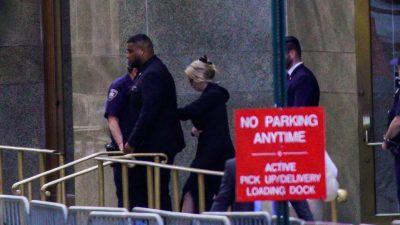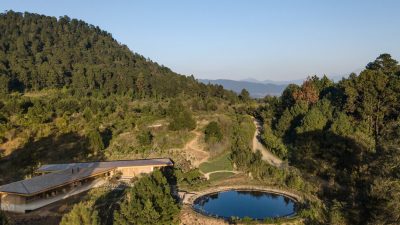What she has to say includes personal insight on craft as a means to heal trauma.
“Very early on, things really exploded and fell apart in my world,” she said, recalling emotional experiences that “make my work what it is.” From 4 years old, she was raised as the youngest of three children by a single mother when her parents divorced. Her father, a Navy captain, moved away from the family. The suicide of a teenage brother destabilized the family anew.
Back in her makeshift studio in Italy, overlooking the verdant courtyard of a castle turned creative paradise, she pointed to the bulletin board above her. On it she had pinned a recent aerial photo of one of the massive sinkholes that — thanks to the climate crisis — now pockmark our planet.
That swirl of a sinkhole, which can look happily cartoonish in the bright hues in which she renders its shape, is a motif that appears often in her work. “As a child, the bottom dropped out,” she said. Subsequently, she is obsessed with rupture: “The voids, the black holes, the sinkhole.”
Her work is not just personal; it’s political, a response to “obliteration, horror, suffering,” as she put it, caused by war or other human-made crises.
It is that duality that appeals to Collins.
“Alongside the sorrow and horror and terror and all of the upset is total exquisite elation and joy,” she said. “I’m interested in those states of mind and having visual language that conveys those states.”
“Even though things can be awful,” she said, looking at the riot of color all around her, she doesn’t ever forget “the euphoria of being alive.”
Sumber: www.nytimes.com












